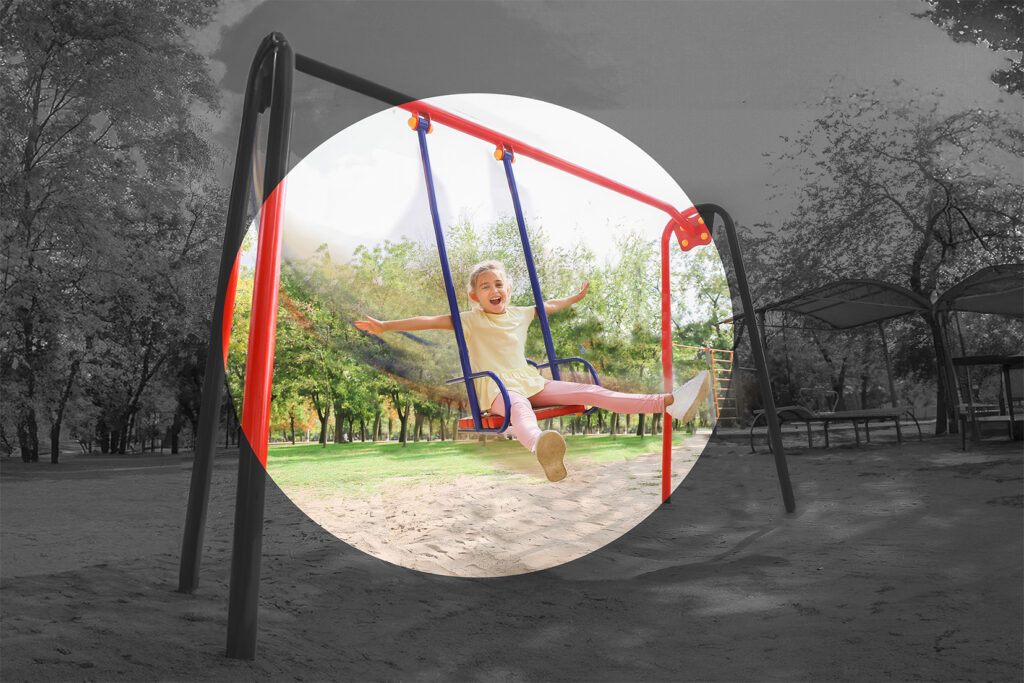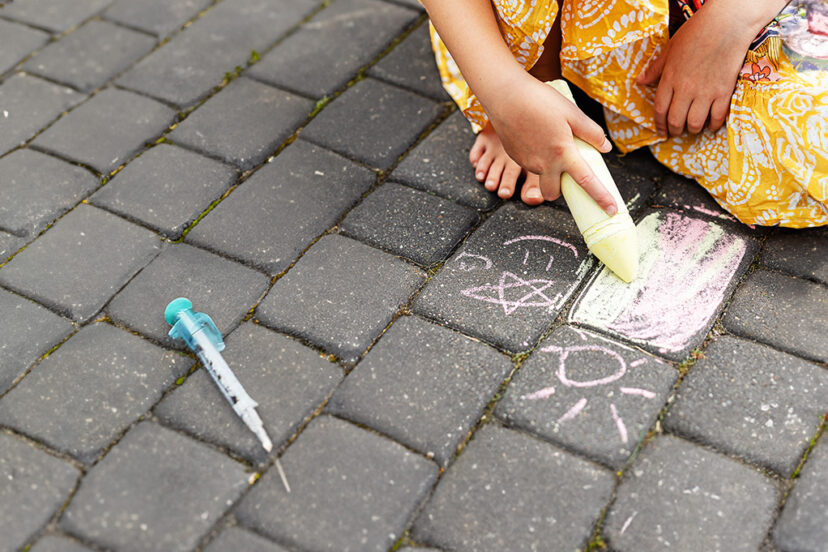Are you putting your Kiddos at risk? Playground Safety
Understanding Playground Safety for Public and Private Playgrounds.
Navigating the landscape of playground safety can be a daunting task for parents. Let’s dissect the pros and cons of both private and public playgrounds concerning safety and potential risks.
For instance, the CDC states that annually, over 200,000 children aged 14 or under are treated for playground-related injuries. In this comprehensive breakdown, we aim to clarify the strengths and weaknesses of both public and private playgrounds, helping families make informed decisions.
Dangerous play?
Before getting carried away with a fatalistic overview of playgrounds, let’s first familiarize ourselves with the genuine concerns about the downsides, drawbacks, and risks of playgrounds, Public and Private.
Once you have a grasp of these concerns, I encourage you to dive into an article highlighting the incredible advantages and positive aspects of both playground types, aptly named “Playground wonders”

Security
Private playgrounds, with their controlled access, present a fortified barrier against potential external threats. This limited access offers parents peace of mind, knowing that their children are playing within a secured perimeter. In contrast, public playgrounds, being accessible to all, might be susceptible to unwarranted visits, even if unintentional.
Safety in Numbers
Public playgrounds, with their perpetual hum of activity, offer a collective vigilance. The presence of numerous adults can deter ill-intentioned individuals. This mass watchfulness gives parents an extra security layer, and children learn about “stranger danger” in a practical setting. Private playgrounds might lack this collective oversight, putting the onus solely on individual parents or caregivers.
Health Concerns
The very nature of public playgrounds, bustling with kids, poses a heightened risk of transmitting germs. Seasons of flu or viral outbreaks amplify these concerns. Private playgrounds, with their limited and known users, substantially reduce such health risks.
Hygiene and amenities
While public playgrounds see more attendance, they also face more littering risks, from food wrappers to discarded toys. This can sometimes escalate to hygiene concerns. This includes changing rooms and restrooms. Private playgrounds, with their limited users, generally tend to be cleaner, but rely on individuals for cleanliness.
Allergen Concerns

Public playgrounds, especially those integrated into parks, can expose children to various allergens, be it pollen, plants, or even insect bites. Private playgrounds can be controlled for such allergens, especially if parents are aware of their child’s specific sensitivities.
Emergency Protocols :
Owing to their public nature, many playgrounds have clear emergency protocols. They might have provisions for easy access to emergency vehicles or even trained first aid professionals during crowded times. In private settings, unless proactively set up, such established protocols might be absent, potentially delaying critical assistance during emergencies.
Inadequate Supervision
While public playgrounds might occasionally have attendants, their engagement level might not always meet every parent’s expectations. This sporadic supervision mandates that parents remain constantly watchful. Private playgrounds, on the other hand, operate under the direct supervision of parents or known caregivers to ensure Playground Safety.
Limited Oversight
The secluded nature of private playgrounds might lead to limited oversight, especially without a surrounding community. Such settings can inadvertently foster unchecked behaviors. Public playgrounds, with diverse caregivers, offer an environment where unsafe actions are often promptly addressed.
Liability Issues

Private playgrounds, especially in HOA communities, come with the potential challenge of legal liabilities. Accidents, however minor, can escalate into legal disputes or insurance claims, burdening the community or individual owners, Thus, using reputable and trusted manufacturers of jungle gyms can limit the playground’s liability.
Safety Standards
Private playgrounds grant direct control over safety. Parents can ensure installations meet top-notch safety standards, select the best equipment, and schedule regular checks. In contrast, while public playgrounds are managed by professionals, waiting for official processes to address safety concerns can sometimes be protracted. The absence of routine professional checks can lead to unnoticed safety lapses.
Limited Emergency Facilities
Public playgrounds, particularly larger ones, often boast emergency facilities, from first aid kits to trained personnel. Such provisions might be conspicuously absent in private setups, potentially turning minor mishaps into significant concerns.
Quality Materials and Thoughtful Design
The safety and durability of playground equipment largely depend on its design, fabrication, and the materials used in its construction. Beyond just the primary equipment, surrounding elements such as playground rubber mulch as ground cover, lighting, and fencing play a crucial role in establishing a secure playground setting.
Equipment Safety

Public playgrounds, given their extensive use, might sometimes have worn-out equipment. The sheer volume of users can expedite wear and tear. In private playgrounds, the equipment, though used less frequently, might not be checked as regularly as in public spaces, posing potential risks.
Regular Maintenance
Public playgrounds, managed by municipalities or organizations, often undergo scheduled maintenance checks. This ensures equipment integrity. In contrast, while private playgrounds see less wear, they rely on the owner’s initiative for maintenance, which can sometimes be sporadic.
Terrain and Ground Safety
Public playgrounds, being open to elements, might sometimes face issues with uneven ground due to natural wear or weather impacts, posing tripping hazards. Private playgrounds offer the advantage of personalized maintenance, ensuring the playing surface remains even and safe, but they might lack the specialized shock-absorbing surfaces found in many public spaces.
Visibility and Lighting
Many public playgrounds are equipped with adequate lighting, catering to evening play hours. This ensures visibility, reducing accident risks after sunset. Private playgrounds might lack such extensive lighting, making evening play more hazardous unless lighting is specifically installed.
Safe Fencing and Boundaries

Public playgrounds usually have clear demarcations or fencing, ensuring children don’t inadvertently run into traffic or unsafe areas. Private playgrounds, especially in backyards, might lack such clear boundaries, necessitating constant adult supervision to prevent potential dangers.
Safety Education and Signage
Public playgrounds often have clear safety instructions displayed on a playground sign, educating children and caregivers about potential risks and appropriate behaviors. Such educational signages might be missing in private settings.
Customization
Private playgrounds offer the unparalleled advantage of customization. Equipment can be selected based on the child’s preferences and needs. This personalized touch, while ensuring safety, also amplifies the fun quotient. Public playgrounds, designed for mass appeal, might not cater to specific individual preferences. A Jungle gym for kids may be too challenging and even dangerous for a younger toddler.
Age-appropriate Design
While many public playgrounds have zones designed for different age groups, ensuring safety for all, there’s always a risk of younger children venturing into areas meant for older kids. Private playgrounds can be designed specifically for the age group in the household, ensuring every equipment piece is age-appropriate.
Adaptability
Public playgrounds, designed for a broader demographic, are typically adaptive to various needs and age groups. In contrast, private playgrounds might be designed with specific age groups in mind, potentially becoming unsuitable as children grow, necessitating frequent updates to ensure safety.
Noise and Sensory Overload
Public playgrounds, especially during peak hours, can be noisy, leading to sensory overload for some children. Private playgrounds provide a quieter environment, beneficial for children who might get overwhelmed easily.
Final thoughts
While the decision between private and public playgrounds boils down to individual needs and preferences, knowledge empowers. Being cognizant of the expansive safety considerations ensures parents are equipped to make the best decisions for their child’s well-being social interactions and enjoyment.
In conclusion, while both playground types come with their unique set of safety advantages and challenges, being informed is key. Recognizing these pros and cons helps parents make choices that prioritize not just fun, but also the safety and well-being of their children.





Comments are closed.